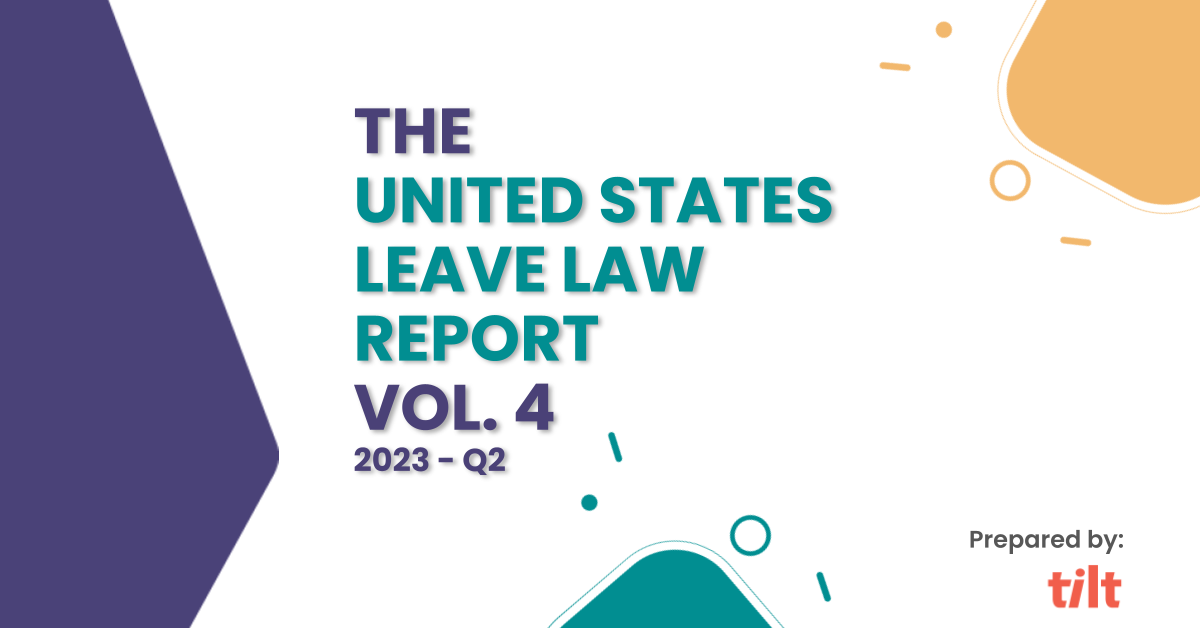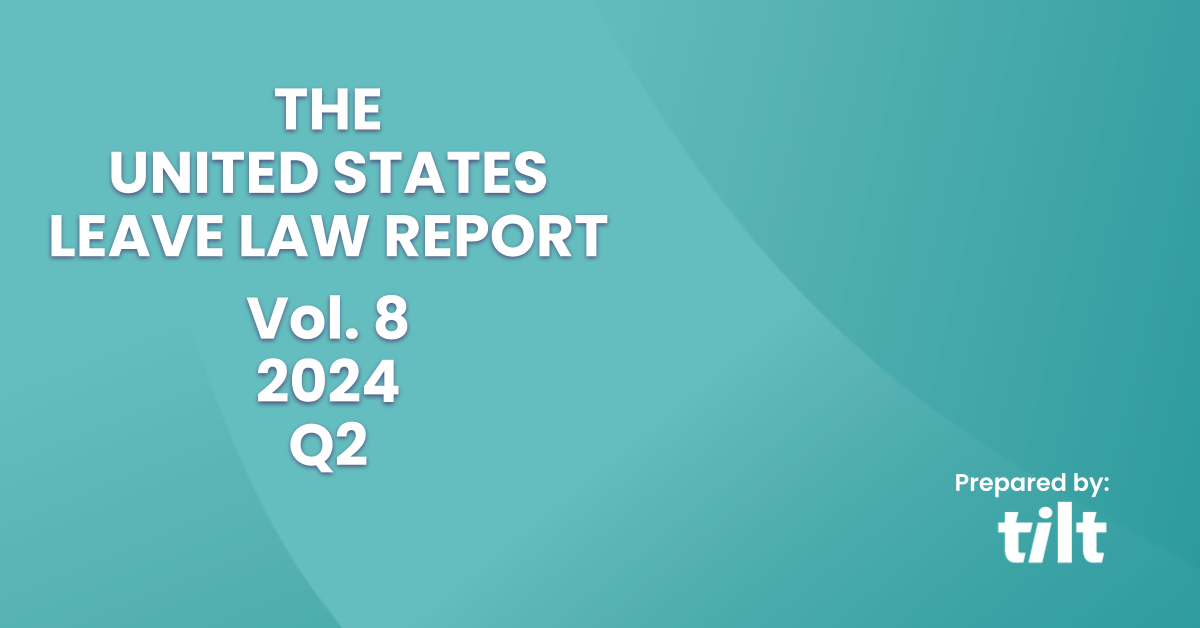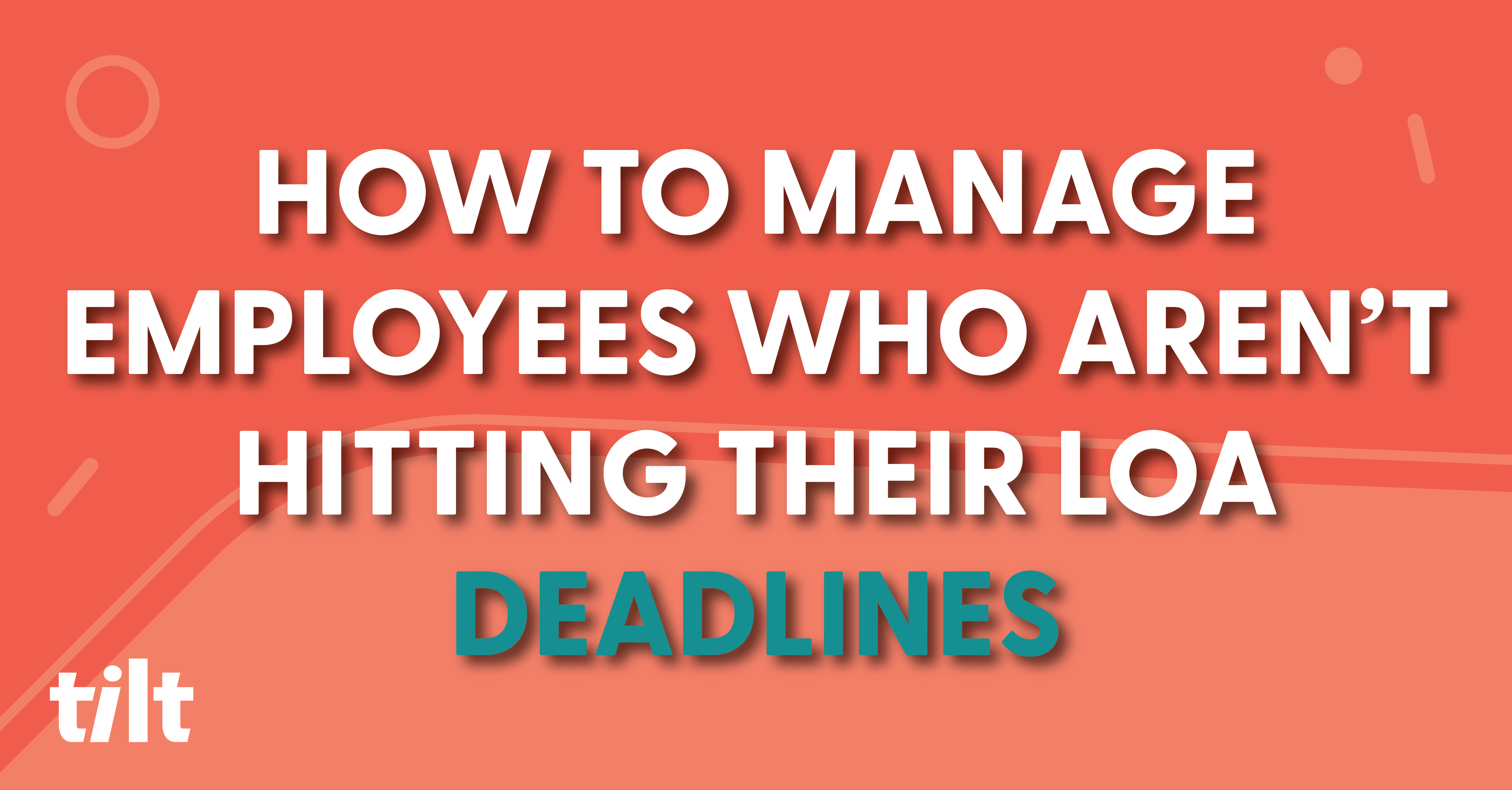It’s no secret that we love leave laws. Does that make us a little weird? Oh yeah…weird af. But it also means we stay up to date on all the changes to federal and state leave laws so you don’t have to.
The United States Leave Law Report Report: Vol. 4 compiles the latest updates to leave programs that might impact you and your organization in one pretty lil’ package (download a pdf version: here)
We hope you find this information useful in your pursuit of supporting your employees and staying compliant!
Looking for all the insightful goodies from previous volumes? See what you might have missed here.
Federal Legislation: Paid Family & Medical Leave
Nearly 3 in 4 adults in the U.S. support a national paid family and medical leave (PFML) program, but Congress hasn’t been able to deliver because Republicans and Democrats have different views on how a PFML program should be managed and funded. In January, representatives from both parties came together to form the House Bipartisan Paid Family Leave Working Group with the goal of identifying a politically viable solution to this issue. The task force met twice in the first quarter and plans to have a comprehensive PFML bill drafted within the next year or two.
National Protections: Pregnant Workers Fairness Act
The Pregnant Workers Fairness Act (PWFA) was passed at the end of 2022 and goes into effect on June 27th, 2023. The PWFA requires employers with 15 or more employees to provide reasonable accommodations to employees affected by pregnancy, childbirth or related medical conditions. Examples of reasonable accommodations include light duty work, flexibility in work hours, more frequent breaks–or a leave of absence.
Tilt will support PWFA leaves when the law goes into effect in June. We will apply PWFA to any pregnancy disability dates that aren’t covered by FMLA, a state leave offering job protection or a company leave. Our standard approach will be to require a medical certification form and consult with customers if PWFA leave is needed outside of the standard 6-8 weeks provided for medical recovery. We’ll finalize and share the details of this process in the next few months, after the EEOC comes out with implementing regulations and guidance.
FMLA: Department of Labor Opinion Letter
In February, the Department of Labor (DOL) issued its first FMLA Opinion Letter in over two years. The letter served as a reminder that eligible employees can use FMLA to work a reduced schedule (fewer hours or no overtime shifts) for an FMLA-qualifying reason. According to the opinion letter, an employee may work a reduced schedule indefinitely if the employee remains FMLA eligible, never exhausts FMLA entitlement, and has an ongoing need for FMLA-qualifying leave.
State Paid Family & Medical Leave
Mandatory Vs. Voluntary Programs
At present, eleven states (and Washington D.C.) have enacted mandatory PFML laws, which guarantee partial wage replacement to eligible employees who work for a covered employer and need leave for a qualifying reason. These benefits are typically administered by the state or a private carrier, but some states permit employers to manage their own voluntary PFML plans.
Mandatory PFML benefits are currently available in California, Connecticut, Massachusetts, New Jersey, New York, Rhode Island, Washington, and Washington D.C. Benefits will be available in four other states soon: Oregon (September 2023), Colorado (2024), Maryland (2025) and Delaware (2026).
In addition, five states have enacted “voluntary PFML” laws that permit, but do not require, employers or employees to purchase PFML insurance as a private market product: Arkansas (NEW as of February 2023), New Hampshire, Tennessee (NEW as of April 2023), Virginia and Vermont.
Mandatory FMLA Programs: Paid Leave Oregon
-Employer Action Required-
Employers with one or more employees working in Oregon should ensure they are complying with Paid Leave Oregon (PLO) requirements, which include:
- providing notice to employees;
- making the appropriate payroll deductions;
- registering for Frances Online; and
- submitting wage reports, and employee and employer contributions (if applicable), on a quarterly basis.
Oregon has provided a helpful Employer Toolkit and Employer Guidebook with more information on these requirements. Also, please note that employers with an approved equivalent plan are generally exempt from submitting contributions to the state-funded plan.
PLO benefits will be available for eligible employees beginning September 3, 2023. In the next few weeks, we will start including PLO information in our leave communications to Oregon employees whose leave dates extend beyond September 3rd. We expect the state to provide additional guidance around PLO in the next few months and will start applying PLO to employee leave plans and pay calculations in August.
When the program goes live, PLO will provide eligible employees with up to 12 weeks of paid leave per year for family, medical and safety reasons, with an additional 2 weeks for pregnancy-related medical leave. Most Oregon workers will be eligible for paid benefits, as the earnings threshold is low ($1,000 in the prior year).
Mandatory FMLA Programs: Colorado FAMLI Act
-Employer Action Required-
Employers with at least one employee working in Colorado have certain responsibilities under Colorado’s Family and Medical Leave Insurance (FAMLI) program, including:
- notifying employees of the program;
- making the appropriate payroll deductions;
- registering in the My FAMLI+ Employer portal by April 30, 2023; and
- submitting their first quarterly wage report and premium payment by April 30, 2023 (note: FAMLI is offering a 30-day grace period if needed).
Employers can apply to use a private plan instead of participating in the state-run FAMLI plan, but they still need to submit their wage data and pay premiums until they receive private plan approval.
FAMLI benefits will be available to eligible employees beginning January 1, 2024. We will start including FAMLI information in our leave communications to Colorado employees, and apply FAMLI to leave plans and pay calculations, in the fourth quarter of 2023.
When FAMLI goes live, the program will provide eligible employees with up to 12 weeks of paid leave for certain family, medical, military and safety reasons, and up to 16 weeks if additional time is needed due to complications related to pregnancy or childbirth. Most workers in Colorado will be eligible for paid FAMLI benefits, as the eligibility threshold is only $2,500 in wages earned in Colorado within a year.
PFML Programs: Notable Developments (as of 4.17.23)
At the federal level, lawmakers have reintroduced the Comprehensive Paid Leave for Federal Employees Act, which would provide 12 weeks of PFML benefits to federal workers, if passed.
- Minnesota is working towards becoming the first Midwestern state with a mandatory PFML program, with a Senate bill that is likely to pass if it can clear the Senate Finance Committee. If enacted in its current form, this program would pay PFML benefits starting July 1, 2025.
- Michigan currently offers 12 weeks of paid leave to state employees, and conditions are favorable for expanding these benefits to employees in the private sector, with a Democratic governor and Democratic control of Michigan’s House and Senate.
- Maine also has a Democratic trifecta in state government and is working on PFML legislation. On top of that, an advocacy group collected enough signatures to get a PFML referendum on the ballot, should legislative efforts stall out–so a PFML program seems especially likely.
Leave-Adjacent Developments
Illinois Paid Leave for All Workers Act
Although the Illinois Paid Leave for All Workers Act (PLFAW) has the words “paid leave” in the title, it’s best understood as a required paid time off (PTO) law. PLFAW takes effect on January 1, 2024 and requires employers to provide 40 hours of PTO for any reason in a twelve month period. This law has exceptions for employers who are covered by a municipal or county ordinance that requires the employer to provide any form of paid leave to their employees (for example, the Chicago Paid Sick Leave Ordinance). Illinois is just the third state to mandate PTO for any reason, joining Maine and Nevada. Although Tilt doesn’t manage employee PTO requests, we wanted to make sure you were aware of this new PTO law (with a misleading name).
New York State – Notice for Nursing Employees
Section 206-c of the New York Labor Law was recently amended to clarify and expand the rights of nursing employees to express breast milk. One of the new requirements is to provide nursing employees written notice of their rights under the law upon hire and annually thereafter, and upon returning to work following the birth of a child. We’re currently awaiting the New York State Department of Labor (NYSDOL)’s model policy and will start including the notice within Tilt for birthing parents who are returning from parental leave before these amendments take effect on June 7, 2023.
San Francisco – Paid Military Leave
San Francisco enacted the Military Leave Pay Protection Act (MLPPA) in January, and it went into effect on 2/19/23. The MLPPA requires employers with 100 or more employees to supplement the pay of certain employees who work in San Francisco and are absent from work for military duty, which is defined broadly. The supplemental pay is for the gap between the employee’s gross military pay, and the gross pay the employee would have received if they had worked their regular work schedule.
About Tilt
Tilt is leading the charge in all things leave of absence management through easy-to-use tech and human touch. Since 2017, our proprietary platform and Empathy Warriors have been helping customers make leave not suck by eliminating administrative burdens, keeping companies compliant, and providing a truly positive and supportive leave of absence experience for their people.







